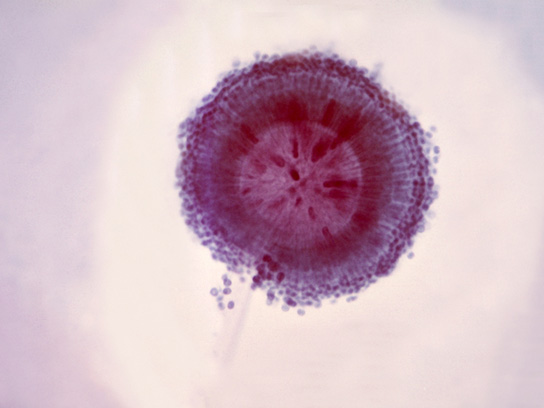Fungal Meningitis Has New Appetite for Human Brains
November 13, 2012

Image: Sebastian Kaulitzki/Shutterstock
In the USA, an ongoing fungal meningitis outbreak has killed 30 people and sickened another 419. The fungus responsible has never wrecked such havoc before.
Exserohilum rostratum is a plant-eating generalist fungus that has a spore-launching mechanism ideal for airborne infection. It is usually found in grasses, but it will dine on anything, including humans.

The fungus Aspergillus niger. Image: Lucille K. Georg /CDC
The errant fungus has been identified in lab samples from 52 of those affected and was similarly found growing in unopened vials of steroids that seem to have been the cause of the outbreak, according to the CDC.
E. rostratum prefers tropical and subtropical environments, and has been found on a number of different plant species. They infect plants and in some cases precipitate tissue death. The plant’s defenses were strong enough to keep infections in check, but not to eradicate it. Once the plant expired, the fungus could feast on its decaying remains. It also grows quite rapidly.
It could have spread northwards by winds and then found itself in human patients through infected steroids. Once inside a patient, the fungus was situated in the epidural space, between the dura matter, which encloses the spinal fluid and spinal cord. The fungus’ filaments were able to penetrate the dura matter, enter the spinal fluid and travel directly into the brain, an environment where the body’s immune system has difficulty eliminating or controlling infections.
In some of the fatal cases, the fungal filaments began to grow in the brain, attracting platelets as well as white and red blood cells to aggregate around the filaments, forming a mass that could block blood vessels and initiate strokes. The exact mechanism of all the deaths is still unclear and the fungus’s confinement to just three lots of the drug also remains unexplained.
No comments:
Post a Comment